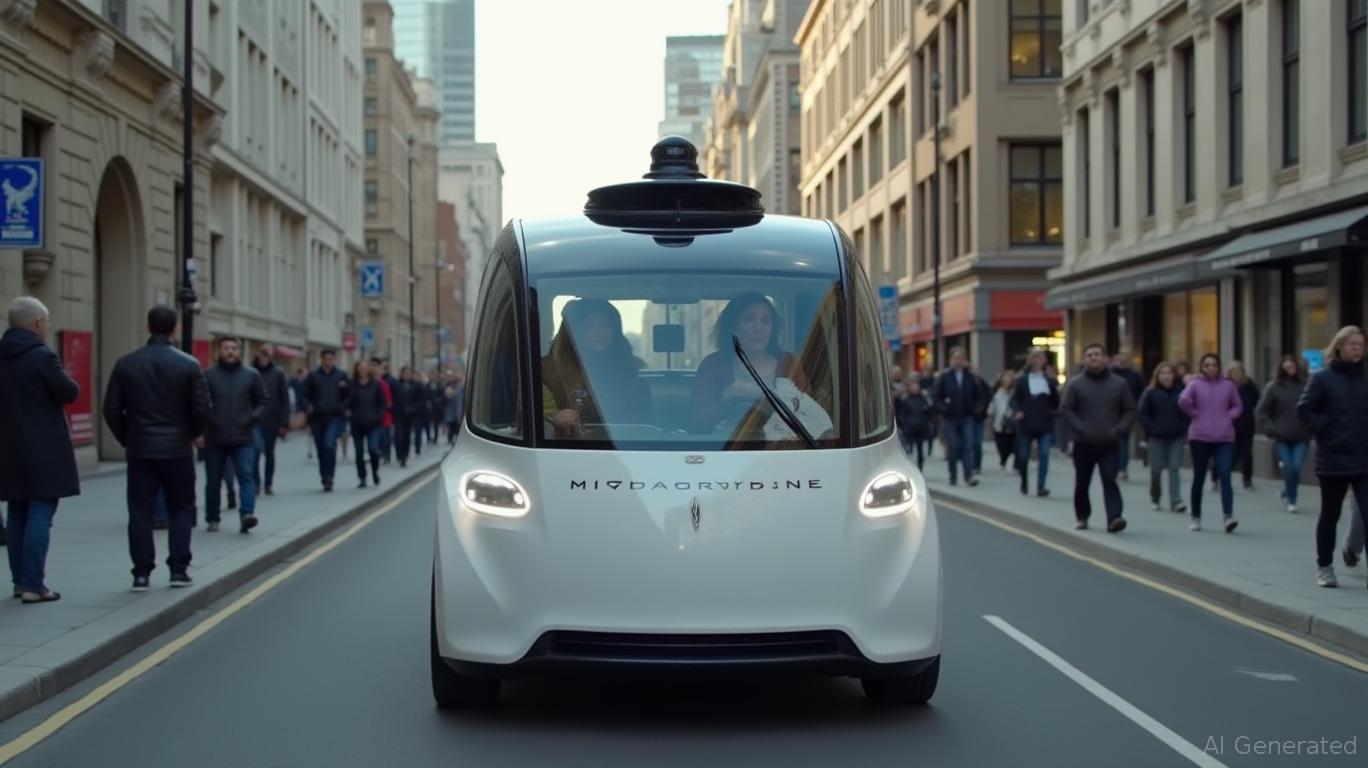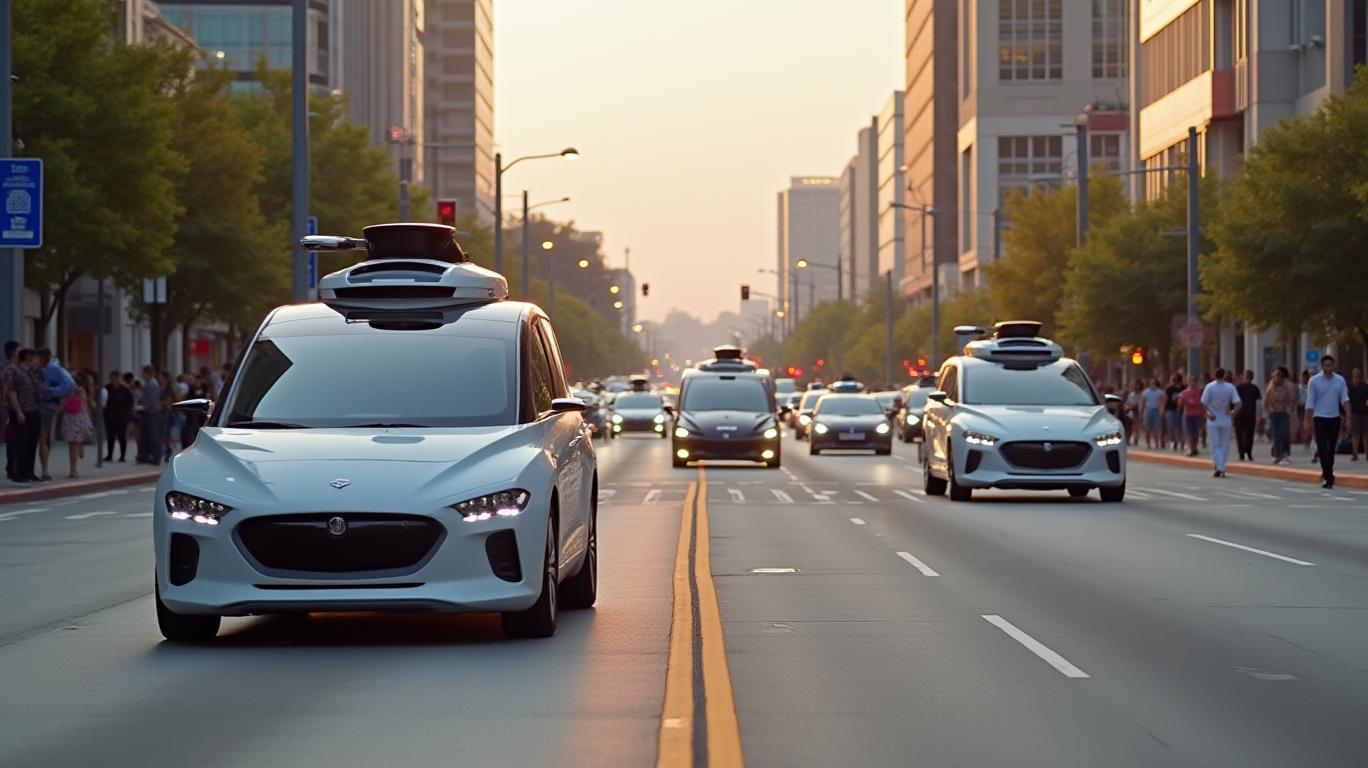Wayve's Japanese Gambit: A Strategic Leap in Autonomous Driving
The UK-based autonomous driving startup Wayve has announced plans to establish a testing and development hub in Japan, marking a pivotal move in its global expansion. This strategic decision, backed by its recent $1.05 billion Series C funding round, positions Wayve at the forefront of the autonomous vehicle (AV) race. The investment underscores Wayve’s ambition to leverage Japan’s regulatory environment and market potential, while competing with industry giants like Tesla and Waymo.

The Funding Boost: Fueling Global Ambitions
Wayve’s Series C round, led by SoftBank Group, Microsoft, and Nvidia, is the largest ever for a European AI startup. The infusion of capital will accelerate development of its “embodied AI” technology, which enables vehicles to learn and adapt in real-world scenarios without reliance on high-definition maps. This approach contrasts with legacy systems dependent on costly sensor arrays and pre-mapped routes, making Wayve’s platform more scalable for markets like Japan.
Why Japan? Regulatory Tailwinds and Market Potential
Japan’s AV sector is ripe for disruption. The government aims to deploy Level 4 autonomy nationwide by 2027, with a focus on remote monitoring systems and integration into smart cities. Wayve’s “mapless” AI aligns perfectly with Japan’s regulatory push for adaptable, sensor-driven systems.
Key drivers include:
- Labor shortages: Japan’s trucking industry faces a 36% driver deficit by 2030, creating demand for autonomous freight solutions.
- Smart city initiatives: Projects in Tokyo and Osaka prioritize AVs for public transit, supported by 5G and IoT infrastructure.
- Electric vehicle incentives: Japan’s decarbonization goals favor electric autonomous vehicles (AEVs), with subsidies for charging networks and battery tech.
Technical Edge: Embodied AI and Compliance
Wayve’s embodied AI, which mimics human learning through end-to-end neural networks, addresses Japan’s strict safety standards. The system’s ability to generalize across diverse environments—from narrow urban alleys to mountain roads—reduces the need for region-specific maps.
Crucially, Wayve’s off-board monitoring platform meets Japan’s 2025 mandate for real-time remote oversight. This infrastructure allows operators to intervene in emergencies, a requirement for Level 4 deployment. Partnerships with telecom giants like NTT could further enhance data transmission reliability, critical for compliance.
Uber’s Role: A Mobility Ecosystem Play
Wayve’s collaboration with Uber represents a dual opportunity:
1. Data leverage: Uber’s global ride-hailing data (150 million monthly users) will train Wayve’s AI to handle unpredictable scenarios, such as sudden lane changes or pedestrian interactions.
2. Market access: Integrating Wayve’s AI Driver into Uber’s platform could create a self-driving ridesharing service, capitalizing on Japan’s aging population’s mobility needs.
Risks and Considerations
Despite the promise, challenges remain:
- Regulatory hurdles: While Japan’s 2027 timeline is ambitious, final liability frameworks for AI-driven accidents are still under discussion.
- Competitor pressure: Toyota, Honda, and tech firms like Nuro are also vying for Japan’s AV market. Wayve’s startup agility must counter established players’ resources.
- Hardware costs: Sensor and compute requirements could strain margins unless economies of scale materialize.
Investment Thesis: High Risk, High Reward
Wayve’s Japan pivot is a calculated gamble with significant upside:
- Market size: Japan’s AV sector could reach $8.06 billion by 2029, with Wayve targeting a slice of freight, ride-hailing, and municipal transport segments.
- Valuation multiples: At a $3 billion post-Series C valuation, Wayve trades at a premium to traditional automakers but in line with AI unicorns like Cruise (a $30 billion firm).
- SoftBank’s influence: As a major investor, SoftBank’s ecosystem ties (e.g., ARM’s chip technology) could provide Wayve with proprietary hardware advantages.
Conclusion: A Leader in the AV 2.0 Era
Wayve’s Japan expansion is more than a geographic move—it’s a bet on the future of autonomous driving. By capitalizing on Japan’s regulatory tailwinds, leveraging Uber’s data, and deploying embodied AI at scale, Wayve positions itself as a leader in the “AV 2.0” era, where cost-effective, adaptable systems outperform legacy models.
The numbers are compelling: a $1.05 billion funding round, a $8.06 billion addressable market in Japan by 2029, and a technology stack designed for global scalability. While risks linger, Wayve’s strategic execution could redefine autonomous mobility—and deliver outsized returns for investors willing to bet on its vision.


_442a2dcc1749832873286.jpeg)
_e68fac6d1749831664430.jpeg)





